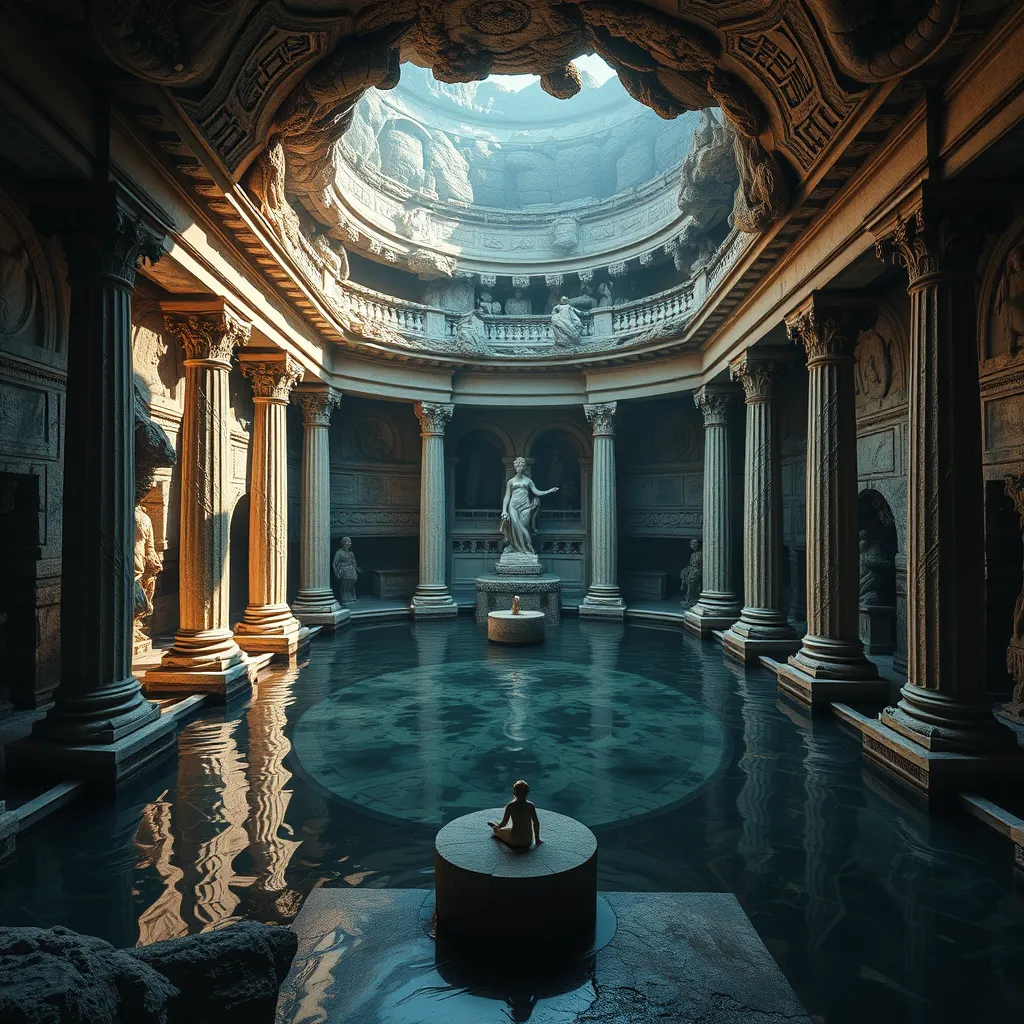The Nymphaeum: Exploring the Sacred Spaces Dedicated to Nymphs
I. Introduction
The term nymphaeum refers to a structure or space dedicated to nymphs, often characterized by its association with water and natural beauty. These sacred spaces served as shrines or sanctuaries where worshippers could pay homage to these divine figures of nature.
In ancient cultures, nymphs were considered elemental spirits associated with various natural features such as rivers, springs, mountains, and forests. Their importance in mythology and religion cannot be overstated; they were believed to embody the life force of nature and to possess the ability to influence fertility, healing, and the natural world.
The purpose of this article is to delve into the historical context of nymph worship, explore the architectural significance of nymphaea, examine the rituals associated with these sacred spaces, and consider the legacy of nymphs in art, literature, and modern culture.
II. Historical Context of Nymph Worship
A. Overview of Nymphology in Ancient Religions
Nymphology is the study of nymphs and their roles in various ancient religions. Nymphs were often depicted as beautiful maidens who inhabited specific natural spaces, and they were revered in a multitude of ways:
- As guardians of nature and fertility.
- As symbols of youth and beauty.
- As intermediaries between gods and mortals.
B. Geographic Distribution of Nymph Cults
Nymph worship was prevalent across various regions, including:
- Greece: Home to numerous nymph cults, particularly in mountainous and wooded areas.
- Rome: Nymphs were integrated into Roman religion, often associated with local water sources.
- Asia Minor: Areas like Phrygia and Lydia held significant nymph worship practices.
C. Evolution of Nymph Worship Through the Ages
The veneration of nymphs evolved over time, influenced by cultural shifts, invasions, and the spread of new religions. Initially, nymphs were worshipped as local deities, but their roles became more symbolic with the rise of major gods in the Greek and Roman pantheons. By the late Roman period, nymphs often became associated with more generalized concepts of nature rather than local spirits.
III. Architecture and Design of Nymphaea
A. Common Architectural Features
Nymphaea were often designed to harmonize with their natural surroundings. Common features included:
- Water features, such as pools or fountains.
- Natural materials like stone and wood.
- Decorative elements reflecting nature, such as carvings of plants and animals.
B. Symbolism in Design Elements
The architecture of nymphaea was imbued with symbolism. For instance:
- Water symbolized life and purification.
- Open-air designs encouraged communion with nature.
- Ornate columns and arches evoked the divine beauty of nymphs.
C. Notable Examples of Nymphaeum Structures
Some notable examples of nymphaea include:
- The Nymphaeum of Ephesus, renowned for its grandeur and decorations.
- The Nymphaeum of Aphrodisias, famous for its elaborate waterworks.
- The Nymphaeum at Villa Adriana, showcasing the opulence of Roman architecture.
IV. Rituals and Practices Associated with Nymphaeum
A. Types of Rituals Performed at Nymphaea
Ritual practices at nymphaea varied widely but typically included:
- Libations poured into water sources.
- Singing and dancing in honor of the nymphs.
- Prayers for fertility and protection.
B. Offerings and Sacrifices to Nymphs
Worshippers often brought offerings to nymphaea, which could include:
- Flowers and fruits.
- Animals, particularly small livestock.
- Handcrafted items, symbolizing gratitude.
C. Festivals Celebrating Nymphs
Festivals dedicated to nymphs were lively events, featuring:
- Processions to the nymphaea.
- Ceremonies involving music and dance.
- Competitive games in honor of the nymphs.
V. Regional Variations in Nymphaea
A. Comparison of Mediterranean Nymphaea
Mediterranean nymphaea often shared architectural styles but differed in local customs and rituals. For example, Greek nymphaea were often simpler and more integrated into natural landscapes, while Roman versions tended to be grander and more decorative.
B. Nymphaea in Northern European Traditions
In Northern Europe, nymph worship evolved into various forms, often blending with local folklore. Here, nymphs became associated with specific local bodies of water, reflecting the cultural significance of lakes and rivers in these regions.
C. Influence of Local Cultures on Nymph Worship
Local cultures heavily influenced the practices and representations of nymphs. For instance, in Celtic traditions, water spirits shared similarities with nymphs, leading to hybrid forms of worship and cultural exchange.
VI. The Role of Nymphs in Art and Literature
A. Representation of Nymphs in Ancient Art
Nymphs have been portrayed in various forms of ancient art, often depicted as:
- Statues and sculptures in both public and private spaces.
- Vases and pottery illustrating mythological scenes.
- Frescoes and mosaics that highlight their connection to nature.
B. Nymphs in Classical Literature and Poetry
Nymphs frequently appeared in classical literature, serving as muses and symbols of beauty. Poets like Hesiod and Ovid celebrated their allure and mystical qualities in their works.
C. Modern Interpretations of Nymphs
In contemporary culture, nymphs continue to inspire art and literature, often reimagined in fantasy genres. Films, novels, and visual arts explore the themes of nature and femininity embodied by nymphs, bridging ancient mythology with modern sensibilities.
VII. Archaeological Discoveries and Research
A. Significant Archaeological Sites with Nymphaea
Archaeological research has uncovered numerous nymphaea, providing insights into their historical significance. Notable sites include:
- The Sanctuary of Nymphs in Delos, Greece.
- The Nymphaeum of Pergamon, known for its intricate mosaics.
- The Nymphaeum at Baelo Claudia in Spain, showcasing Roman influence.
B. Recent Discoveries Related to Nymph Worship
Recent excavations have unearthed artifacts such as altars, votive offerings, and inscriptions that shed light on nymph worship practices, revealing the rituals and cultural significance of these spaces in ancient societies.
C. Challenges in Researching Nymphaea
Researchers face several challenges in studying nymphaea, including:
- Natural erosion and destruction of archaeological sites.
- Limited historical documentation on specific rituals.
- Interpreting artifacts within the context of shifting cultural beliefs.
VIII. Conclusion
A. Recap of the Importance of Nymphaea



